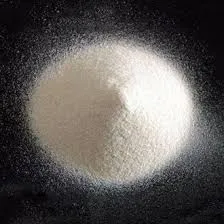
12월 . 25, 2024 20:00 Back to list
hpmc structure
Understanding HPMC Structure A Comprehensive Overview
Hydroxypropyl Methylcellulose (HPMC) has become an essential component in various sectors, including pharmaceuticals, food, and construction. As a cellulose ether derived from natural cellulose, HPMC serves multiple functions, primarily acting as a thickener, emulsifier, and film-forming agent. This article delves into the structure of HPMC and its implications for its practical applications.
The Basics of HPMC
HPMC is produced by the chemical modification of cellulose, which is a polysaccharide found in the cell walls of plants. The modification involves etherifying cellulose with propylene oxide and methyl chloride. The resulting structure of HPMC is characterized by the substitution of hydroxyl groups on the cellulose backbone with hydroxypropyl and methyl groups. This modification alters its solubility, viscosity, and other physical properties, making HPMC a versatile compound used in various industries.
Structural Characteristics
The structural composition of HPMC is pivotal to its functionality. The cellulose backbone retains its linear polymeric nature, composed of glucopyranose units linked by β-1,4-glycosidic bonds. However, the degree of substitution (DS) resulting from the hydroxypropyl and methyl groups significantly affects the polymer's properties. HPMC typically has a DS ranging from 1.1 to 2.0, indicating the number of hydroxyls modified in the structure.
The placement and ratio of hydroxypropyl to methyl groups impact HPMC's solubility in water and organic solvents. The presence of hydroxypropyl groups enhances the solubility in cold water, while a higher methyl substitution generally leads to increased hydrophobicity and thermal stability. Consequently, the structure of HPMC is often tailored to meet specific application needs.
hpmc structure

Physical Properties
The structure of HPMC also contributes to its rheological properties. Depending on its molecular weight and the degree of substitution, HPMC can exhibit a range of viscosities, making it suitable for numerous formulations. In pharmaceutical applications, HPMC is employed as a binder and controlled-release agent in tablets and coatings, enabling sustained drug release profiles. In food formulations, it acts as a stabilizer and thickener, improving texture and mouthfeel.
Moreover, the film-forming capability of HPMC allows its use in protective coatings and drug delivery systems. The molecular structure allows it to form a coherent film upon drying, which is crucial in applications like sustained-release tablets and barrier coatings for food products.
Applications Across Industries
The versatility of HPMC is reflected in its varied applications. In the pharmaceutical industry, HPMC is widely used for its excipient properties, where it aids in drug formulation and delivery. In the food industry, HPMC serves as a fat replacer, thickener, and stabilizing agent, contributing to products such as sauces, dressings, and ice creams. The construction industry also benefits from HPMC, where it is utilized as a thickening and water-retention agent in cement and mortar.
Conclusion
In summary, the structure of HPMC is integral to its wide-reaching applications across multiple industries. Its unique properties stem from the modification of cellulose, giving rise to a compound that offers both functional benefits and versatility. As industries evolve and seek innovative solutions, understanding the structure and function of HPMC will remain pivotal in developing advanced products that meet emerging challenges. Its ability to adapt and sustain diverse applications highlights HPMC's importance as a tool for innovation in today’s market.
-
Versatile Hpmc Uses in Different Industries
NewsJun.19,2025
-
Redispersible Powder's Role in Enhancing Durability of Construction Products
NewsJun.19,2025
-
Hydroxyethyl Cellulose Applications Driving Green Industrial Processes
NewsJun.19,2025
-
Exploring Different Redispersible Polymer Powder
NewsJun.19,2025
-
Choosing the Right Mortar Bonding Agent
NewsJun.19,2025
-
Applications and Significance of China Hpmc in Modern Industries
NewsJun.19,2025







